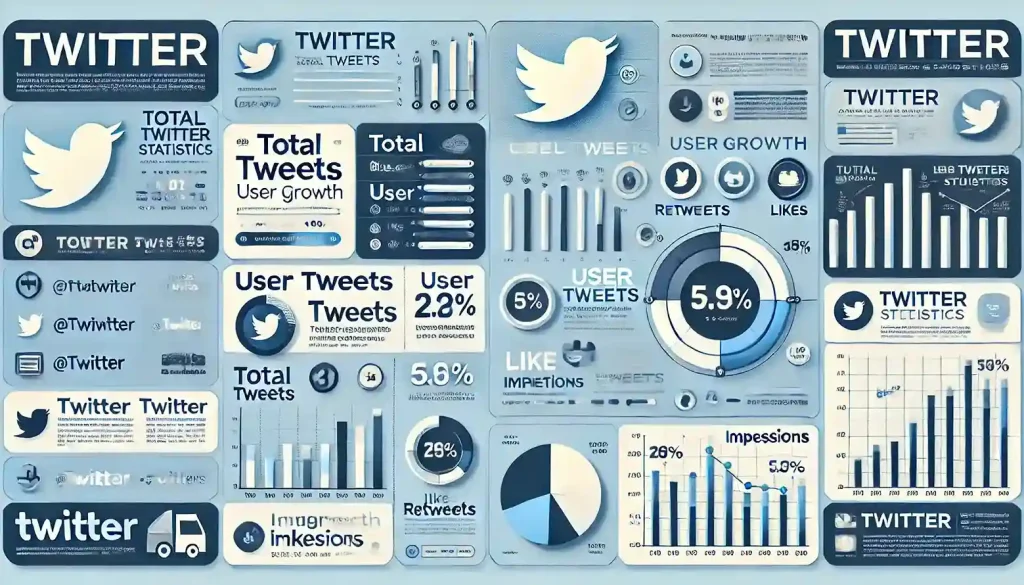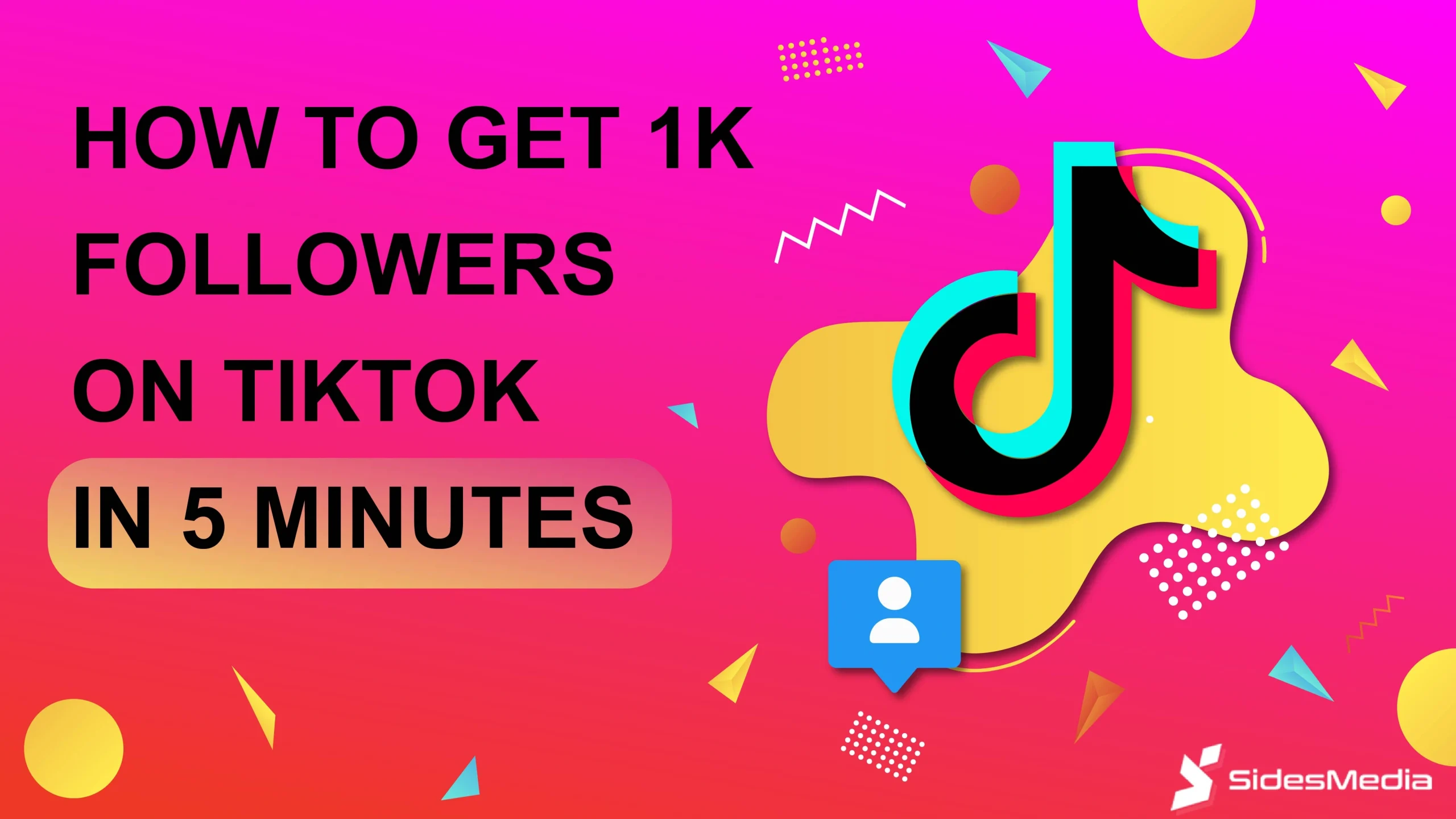25 Must-Know Twitter Statistics for Marketers
Published: December 26, 2024
Twitter statistics are more than just numbers – they tell a story. Imagine this: A small online business is struggling to make waves in a crowded marketplace.
The owner decides to give Twitter a shot. Using data-driven insights, they create viral posts that drive traffic, boost sales, and even build a loyal customer base.
It’s what understanding the right Twitter stats can do for your business.
Twitter, or X as it’s now rebranded, remains one of the leading social media platforms, where trends emerge, conversations thrive, and brands grow.
Let’s explore the numbers that matter and how marketers can use them to their advantage.
Índice
25 Twitter Statistics for Marketers

Twitter has become a powerful platform for marketers, offering a mix of real-time interaction, global reach, and unique advertising opportunities.
Here are 25 key usage statistics, explained and contextualized to help you understand its marketing potential:
1. Twitter’s Monthly Active Users – Twitter has 619 million monthly active users, making it one of the top social platforms globally. This vast user base offers marketers countless opportunities to reach diverse audiences. (Hootsuite)
2. Daily Tweets Sent – Every day, over 500 million tweets are sent, highlighting how active and fast-paced the platform is. This is why timing and engaging content matter on Twitter.
3. Average Daily Time Spent – Twitter users spend about 31 minutes per day on the platform, a respectable number compared to competitors like Facebook and Instagram. This makes Twitter ideal for frequent updates and real-time marketing.
4. Mobile Users Dominate – Approximately 80% of Twitter users access the platform through mobile devices, so ensure your tweets are optimized for mobile readability.
5. Gender Breakdown – Men make up 70% of Twitter’s user base, while women account for 30%. This skewed demographic can inform targeted campaigns.
6. Age Demographics – The largest age group on Twitter is 25–34-year-olds, who make up 38% of its audience. This makes Twitter ideal for brands targeting millennials.
7. Most Popular Country – The United States has the most Twitter users, with 106.23 million active accounts, followed by Japan and India. Knowing your audience’s location can help tailor your campaigns. (Statista)
8. Promoted Tweets Performance – Promoted tweets are 32% more likely to be seen than organic tweets, making them a powerful advertising tool.
9. Video Tweet Engagement – Tweets with videos generate 6x more retweets than tweets with images or plain text. Adding multimedia elements boosts interaction.
10. Hashtags Drive Retweets – Tweets with at least one hashtag are 33% more likely to be retweeted than those without, showing the importance of using relevant hashtags.
11. Twitter Ads’ Reach – Twitter ads can reach 6.5% of all internet users worldwide, making them a powerful tool for brand awareness.
12. Ad Revenue Growth – Twitter generated $4.4 billion in advertising revenue in 2024, emphasizing its reliance on ads as a key income source.
13. Brand Interaction – About 85% of small and medium businesses use Twitter to provide customer service and interact with their audience.
14. Audience Engagement – Tweets with polls or interactive content often see engagement rates twice as high as regular tweets, encouraging brands to include audience participation.
15. Follower Growth Ads – Follower Ads on Twitter help brands grow their following by 27% faster than organic efforts.
16. Trending Hashtag Impact – Using trending hashtags in your campaigns can boost tweet visibility by 89%. It’s an easy way to connect with ongoing conversations.
17. Daily Active Users – Twitter boasts 237.8 million daily active users, showing the platform’s consistent engagement levels. (Sprout Social)
18. Real-Time Events – Twitter accounts for 70% of live event discussions, making it the go-to platform for real-time interaction.
19. User Purchase Behavior – Around 41% of Twitter users have purchased a product after seeing an ad on the platform, highlighting its potential for e-commerce brands.
20. Video Content Advantage – Video tweets generate 10x higher engagement than text-only posts, making them essential for successful campaigns.
21. Language Diversity – While English dominates, Japanese and Spanish are the second and third most-used languages on Twitter. This is crucial for global marketing efforts. (DataReportal)
22. Elon Musk’s Impact – Since Elon Musk’s acquisition, daily tweet volume has increased by 8%, reflecting heightened activity among users.
23. Twitter Blue Subscribers – Twitter Blue attracted 2.5 million subscribers within six months of its launch, indicating user interest in premium features.
24. Most Common Use Cases – Twitter is primarily used for news, entertainment, and engaging with brands. These three activities dominate user behavior on the platform.
25. Long-Form Tweets – The introduction of 4,000-character tweets has increased content engagement by 12%, offering more room for in-depth messaging.
Why Marketers Should Care About Twitter Statistics
Twitter users are active, vocal, and ready to interact. With over 368 million monthly active users, it’s a place where conversations move fast and attention spans are short.
For marketers, this means opportunities are endless – but only if you know how to use the platform effectively.
More than just a social media site, Twitter has become a hub for real-time news, viral moments, and even brand customer service.
And here’s the thing: users worldwide turn to X Twitter not only to consume content but to interact with brands directly.
Twitter’s Massive Reach and Demographics

Twitter’s reach is nothing short of impressive. As of 2024, the platform boasts 396.5 million users worldwide (DataReportal, 2024). That’s a huge slice of the digital pie, especially when compared to other social media apps.
Key Demographic Insights:
- Age Group: 38% of active users are aged 25–34, making this the most active demographic on the platform.
- Gender Split: 70% of Twitter accounts are held by men, while 30% are held by women.
- Top Countries: The United States leads with 77 million users, followed by Japan and India.
- Language: Most tweets are written in English, but other popular languages include Japanese, Spanish, and Portuguese. [Data Reportal]
Twitter Monthly Active Users and Engagement Habits
Monthly active users are a vital metric for any social media platform, and Twitter excels here with its 368 million active users. But what sets Twitter apart is its interaction.
The average user spends 31 minutes daily on the platform, consuming a mix of news, entertainment, and discussions.
How Do Twitter Users Spend Their Time on Twitter?
- Trending Topics: Users flock to Twitter to follow breaking news and trending hashtags.
- Brand Interactions: Many users rely on Twitter to directly engage with brands, ask questions, or provide feedback.
- Content Consumption: Users often scroll to see videos, memes, and links shared by their network.
Tip: To maximize visibility, brands should align their content with trending topics and post during peak hours.
Advertising Revenue and Marketing Power X Statistics
Twitter generated $4.4 billion in advertising revenue in 2024. This might seem small compared to Facebook’s $114.9 billion, but it highlights the platform’s niche strength – real-time interaction.
Why Twitter Ads Work
- Increased Visibility: Promoted tweets are 32% more likely to be seen than organic posts.
- Wide Reach: Twitter ads have the potential to reach 6.5% of all internet users worldwide.
- Engagement-Driven Formats: Ad formats like Promoted Tweets, Follower Ads, and Trend Takeovers drive higher interaction rates.
Elon Musk Bought Twitter – What Changed?
When Elon Musk bought Twitter for $44 billion, the platform underwent significant changes, transforming into X. These changes have redefined user experience and marketing opportunities.
Notable Updates Since Musk’s Acquisition:
- Longer Tweets: Posts can now be up to 4,000 characters, allowing for more detailed content.
- Monetization for Creators: Revenue-sharing opportunities have encouraged creators to remain active on the platform.
- Increased Activity: Daily tweet volume rose by 8% after the rebrand.
Comparing Twitter to Other Social Media Platforms
| Métrica | Twitter (X) | ||
| Utilizadores activos mensais | 368M | 2B | 2.9B |
| Envolvimento do utilizador | Médio | Elevado | Médio |
| Advertising Revenue | $4.4B | $33.6B | $114.9B |
| Melhor para | Real-time updates | Visual content | Community building |
While Twitter excels in real-time updates and fast-paced interactions, Instagram and Facebook dominate in other areas like visuals and long-form community-building.
Twitter Ads Stats – A Marketer’s Secret Weapon

Twitter ads provide marketers with powerful tools to reach their target audience. With over 23 million businesses advertising on the platform, it’s a tried-and-true method for growing brand awareness.
Types of Twitter Ads:
Twitter ads are a smart way to get your brand in front of the right people. They’re built for interaction, making it easier to connect with your audience in real-time.
Why They’re Effective
Promoted tweets are 32% more likely to be noticed than regular posts. That’s huge on a platform where content moves fast.
These ads also have a massive reach, with the potential to connect with millions of people globally. It’s a simple way to get your message out there quickly and effectively.
Types of Twitter Ads That Work
- Promoted Tweets: These show up in feeds just like regular tweets but are designed to stand out and get clicks or replies.
- Follower Ads: Perfect for growing your audience – they target people who are likely to follow your account.
- Trend Takeovers: Put your hashtag at the top of trending topics, making it a centerpiece for the day.
Twitter ads don’t just sit there – they start conversations and get people talking about your brand.
They’re simple to use and can make a big impact when done right. If you’re looking for a way to make a splash, Twitter ads are worth trying.
Why User Engagement Matters
Twitter is unique in how it drives user interaction. More Twitter retweets, replies, and quote tweets create a culture of interaction that many other platforms struggle to replicate.
How to Increase Interaction:
- Timing: Post during peak hours, typically weekdays from 9 a.m. to 3 p.m. (Sprout Social, 2024).
- Visual Content: Tweets with images or videos receive 150% more engagement than text-only posts.
- Interactivity: Use polls, GIFs, or live tweeting to encourage active participation.
Future Trends in Twitter Marketing
Twitter isn’t just standing still – it’s evolving. New features like Spaces for live audio conversations and enhanced analytics for businesses are paving the way for even more marketing opportunities.
What’s Next for Twitter Usage?
- AI-Powered Analytics: Advanced tools will provide deeper insights into audience behavior.
- E-Commerce Integration: Shoppable tweets are becoming more common, allowing businesses to drive direct sales.
- Focus on Creators: Monetization features will continue to grow, keeping creators active and engaged.
Conclusão
Twitter is far from just another social media apps. With its large user base, real-time interactions, and robust advertising options, it’s a marketer’s dream.
By understanding these important Twitter statistics and aligning your strategy with the platform’s unique strengths, you can unlock endless opportunities for growth.
Perguntas mais frequentes
How do I see Twitter statistics?
To see Twitter marketing statistics for your account, you can use Twitter Analytics, a free tool provided by the platform. Here’s how you can access it:
- Log in to your Twitter account.
- Click on “More” in the left-hand menu and select Analytics.
- You’ll see an overview of key metrics, including tweet impressions, profile visits, mentions, and follower growth.
Is Twitter growing or declining?
Twitter’s user base has seen mixed trends recently. While it had 368 million monthly active users in 2024, this number represents a slight decline compared to earlier years.
However, daily tweet volume increased by 8% after Elon Musk’s acquisition, suggesting heightened activity among existing users.
In short, while overall growth has slowed, interaction among active users appears to be on the rise.
Is Twitter losing profit?
Yes, Twitter has faced profitability challenges. After Elon Musk’s acquisition, the platform’s advertising revenue dropped by nearly 40% due to major advertisers pulling back.
Despite efforts to diversify Twitter’s revenue streams with paid subscriptions and monetization for creators, these have not yet fully compensated for the loss in ad revenue.
The company is actively working on strategies to rebuild its profit margins.
Is Twitter engagement down?
No, Twitter interaction is not universally down. While some advertisers have reported decreased performance, overall interaction metrics like daily tweet volume have increased by 8% since the rebrand to X.
Additionally, tweets with visual content – like images or videos – continue to drive significant interaction, with engagement rates up to 150% higher than text-only posts.




